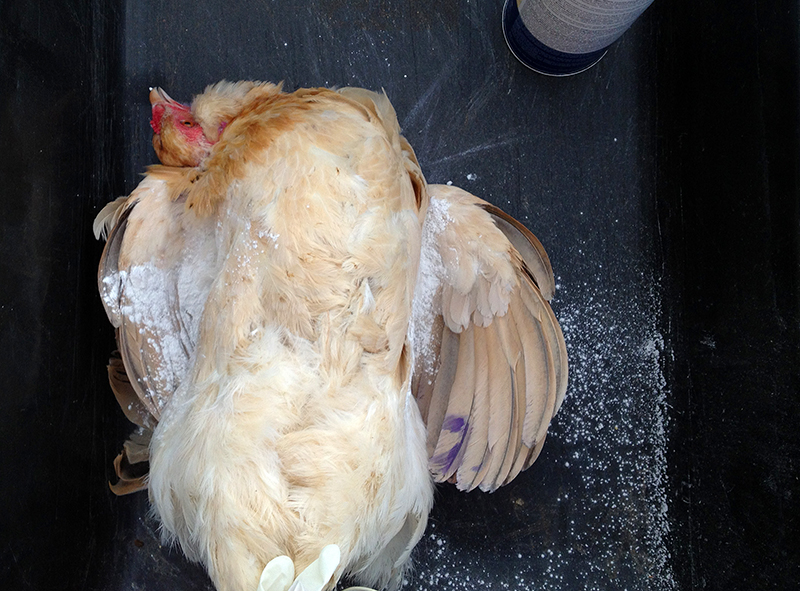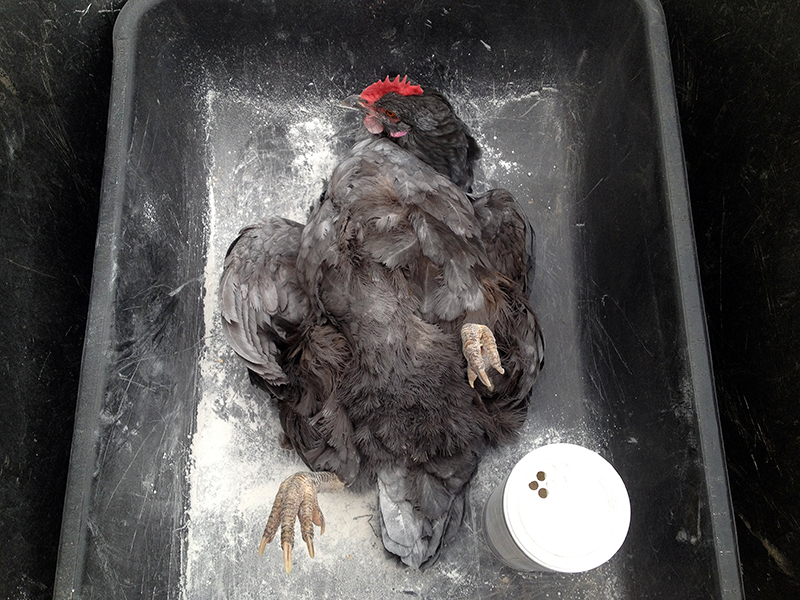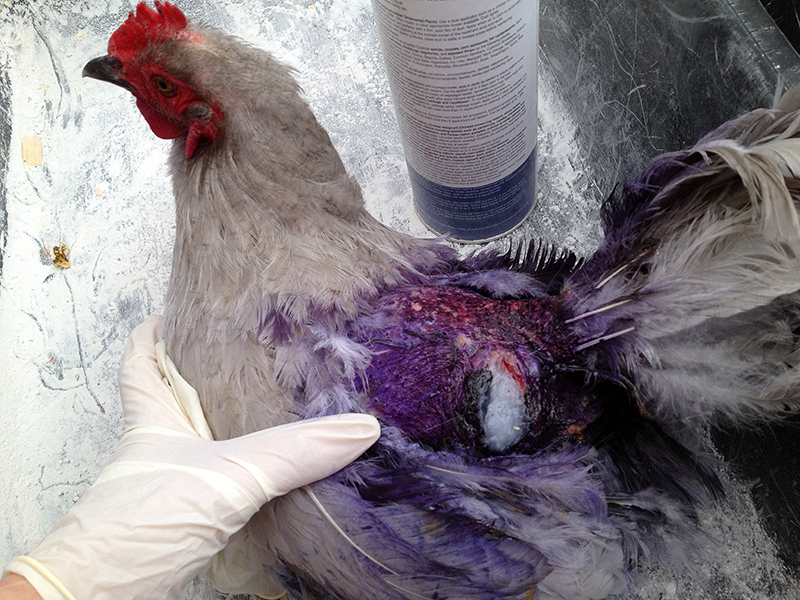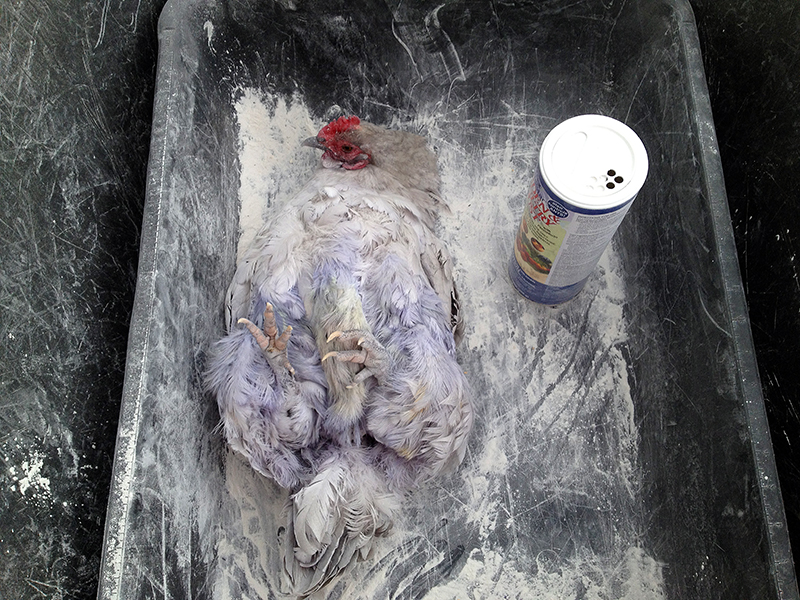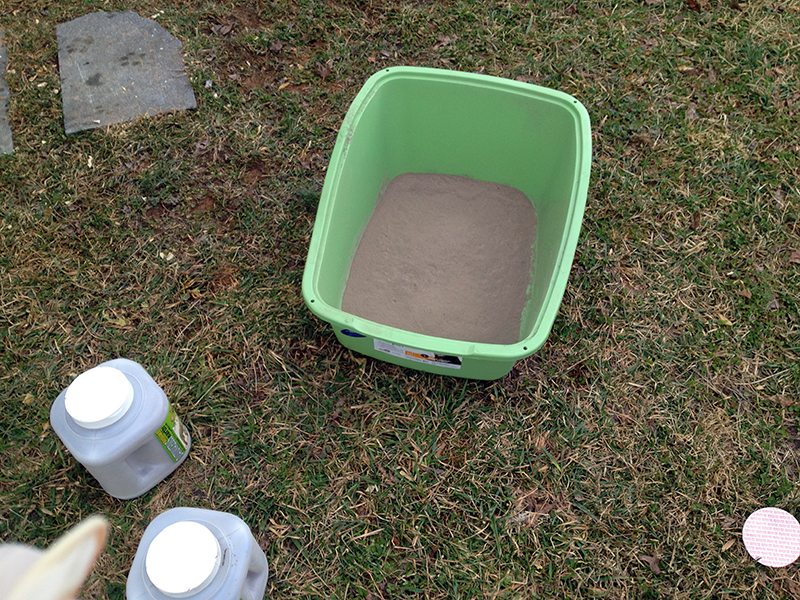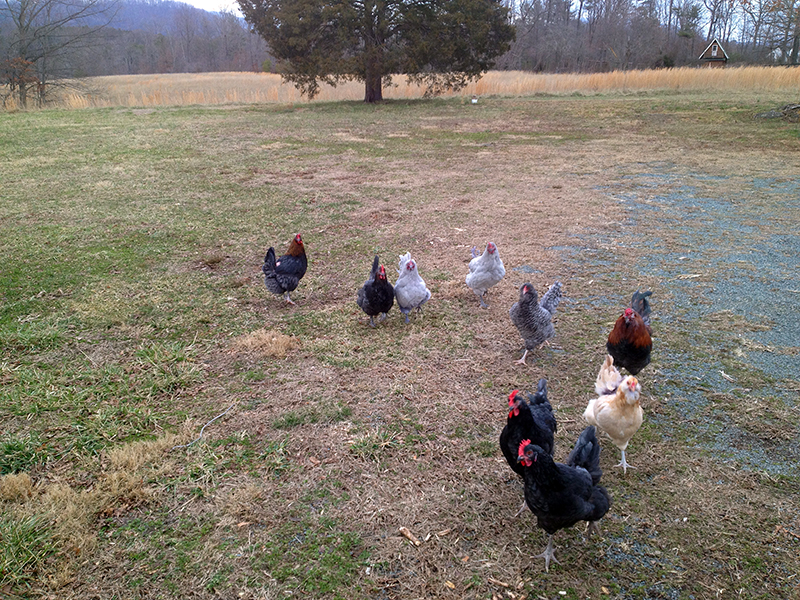One upside of attending to my Lavender Orpington’s wound on Sunday was that I discovered she had lice. And when I snagged Oregano, my barred olive egger, for inspection I saw that she too had a few creepy crawlies. It was time for an intervention.
With a healthy flock, regular dust bathing will keep most parasites at bay. But in winter, with its frozen or muddy ground, the birds aren’t able to dust bathe as much as in the warmer seasons. This gives lice a chance to populate the birds. If unchecked, these blood-sucking parasites will deplete a bird to the point where it dies.
Thankfully my flock was no where near that stage. Yet, after spending a night researching various treatments I decided to go straight for the chemical intervention and not waste my time with more “natural” or “organic” methods. I really wanted to nip this infestation in the bud, particularly as it’s still winter and the birds need all the energy they produce just to keep warm and regrow the feathers they’ve lost. And, in another few weeks (if I can get Iris to go broody again) I’d like to try hatching some eggs, which means all my birds should be as healthy as possible and louse-free to avoid passing the bugs on to more-vulnerable chicks.
So I picked up a can of poultry dust, which is a permethrin-based formulation that you may have used for insects in your vegetable garden. I assembled my tools:
I also suited up in latex gloves and a dust mask. Well, the gloves were a joke because it took just one kick of a captured chicken to shred them. I went through five pairs through this process and still ended up covered in dust. If you’re concerned about skin contact, I’d suggest heavier gloves for this job. And, really, with all the flapping and wind I ended up covered with this dust so if you are truly concerned it may not be the treatment for you to use.
Cora, the Wheaten Ameraucana hen, was the first I caught in the coop. Following the advice of a YouTube video, I flipped her on her back. This seemed to calm her enough that I could powder under her wings, a favorite parasite hiding spot. I held her upside down to work the powder in to the feathers under her vent, which is where I saw the lice in all my birds.
Lilac was up next.
And so on through the flock. I left the injured Lavender until last so I could inspect her wound. It was open and bleeding, which I prefer to closed and infected, and seemed a tiny bit smaller than on Sunday.
I packed it full of neosporin before dusting her.
Now that’s a Lavender Orpington!
With the flock dusted, I did some housekeeping in the coop. I sprinkled food-grade diatomaceous earth in the nest boxes, in the chicken food, and filled a litter box with the stuff for dust-bathing in the coop. The diatomaceous earth, which is actually decomposed hard-shelled algae, acts in a mechanical manner (as opposed to chemical) on insects by slicing open their soft bodies, killing them.
And with that the delousing procedure was complete. Now I get to look forward to ten days from now, when I repeat the powdering to kill any nits that will have hatched since today. Fun times!


